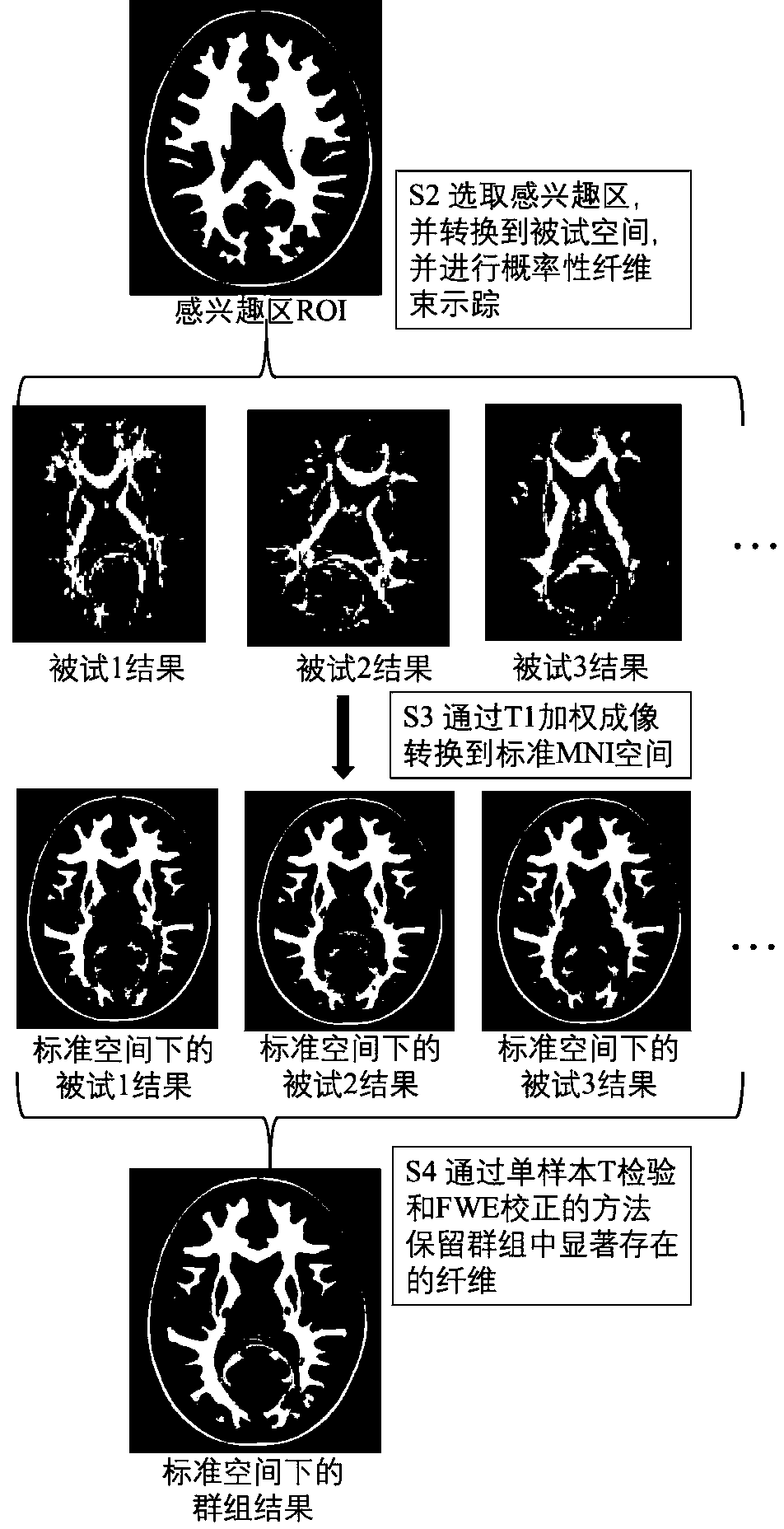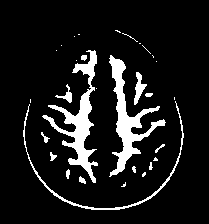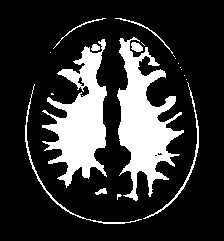White matter fiber bundle tracing analysis method and system based on magnetic resonance imaging
A magnetic resonance imaging and white matter fiber technology, which is applied in the field of medical image processing, can solve the problems of difficult group analysis of fiber tract tracing results, large differences in the shape of fiber tracts, and no satisfactory registration method, and achieves good clinical results. The effect of applicability and operability
- Summary
- Abstract
- Description
- Claims
- Application Information
AI Technical Summary
Problems solved by technology
Method used
Image
Examples
Embodiment Construction
[0026] In order to make the above objects, features and advantages of the present invention more obvious and understandable, the present invention will be further described below through specific embodiments and accompanying drawings.
[0027] In order to verify the reliability of the present invention, the present invention studies the difference between Prader-Willi Syndrome (PWS), an obesity caused by a gene mutation, and common obesity. The experimental results found that 10 ROIs had damage to the white matter fiber tracts (the anisotropic fraction FA value was significantly reduced).
[0028] Figure 2 shows the experimental results of this PWS obesity study. Among them, 12 PWS children, 18 ordinary obese children, and 18 normal weight children participated in the experiment, aged between 7 and 9 years old. All subjects were acquired T1-weighted structural images and DTI sequence scans on the Siemens Allegra magnetic resonance equipment in Germany. The acquired MRI data ...
PUM
 Login to View More
Login to View More Abstract
Description
Claims
Application Information
 Login to View More
Login to View More - R&D
- Intellectual Property
- Life Sciences
- Materials
- Tech Scout
- Unparalleled Data Quality
- Higher Quality Content
- 60% Fewer Hallucinations
Browse by: Latest US Patents, China's latest patents, Technical Efficacy Thesaurus, Application Domain, Technology Topic, Popular Technical Reports.
© 2025 PatSnap. All rights reserved.Legal|Privacy policy|Modern Slavery Act Transparency Statement|Sitemap|About US| Contact US: help@patsnap.com



